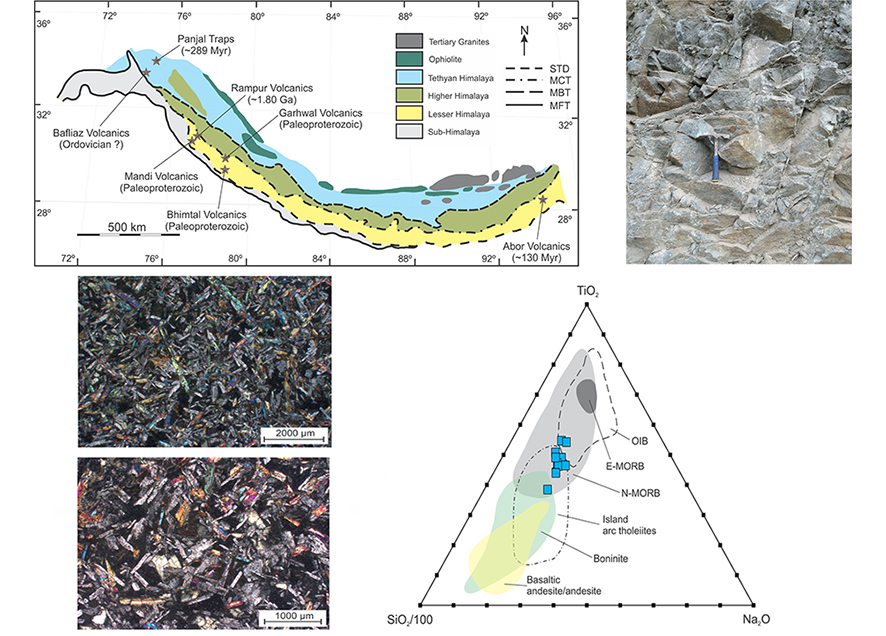Mineralogical constraints on petrogenesis and tectonic affiliation of Karnaprayag-Rudraprayag metamafics, Garhwal Lesser Himalaya
DOI:
https://doi.org/10.13133/2239-1002/17630Abstract
Widespread Paleoproterozoic mafic magmatic rocks penecontemporaneous with orthoquartzites occur in the Lesser Himalayan Sequence. These rocks were subjected to low grade metamorphism and previous comprehensive geochemical studies on these metamafics have highlighted their origin from an enriched sub-continental lithospheric mantle source. We present mineralogical investigation on the metabasalts and metagabbros from Karnaprayag-Rudraprayag area of the Garhwal Lesser Himalayan Sequence to understand substitution mechanisms within various intra-crystalline sites and assess the role of primary magmatic versus post-magmatic processes in their origin. Relict clinopyroxene (augite) composition is used to infer the magmatic and tectonic affiliation of these rocks. Silica saturated nature of low-Ti augites in these metamafics is consistent with a calc-alkaline nature of the host rock and show compositional resemblance to clinopyroxenes from both the island arc basalts and mid-oceanic ridge basalts. Clinopyroxene thermometry constrain crystallization temperature of low-Ti augites in the range of 822-887°C. The studied metamafics are petrographically characterized by a predominance of amphiboles that are compositionally classified as ferro-hornblendes and actinolites. These calcic-amphiboles are SiO2 rich and low in Ti and alkalis highlighting their post-magmatic or secondary origin. Amphibole stoichiometry suggests edenite exchange to be the most dominant substitution mechanism, which is common in amphiboles of metamorphic origin. Biotites are poor in MgO and stoichiometry reveals predominance of Ti-Tschermak’s and Ferri-Tschermak’s substitution. These Fe-biotites show variable TiO2 content but lower than the biotites of primary magmatic origin. Characterized by FeO/(FeO+MgO) ranging between 0.70 and 0.85, and Fe3+/Fetotal as high as 0.61, these biotites are compositionally similar to biotites originated from crustal-derived melts highlighting their secondary origin. Anhedral titanites mantling ilmenite constitute a common accessory phase and their higher Al/Fe (>1.5) compared to primary titanites found in igneous rocks indicates their post-magmatic origin. Such metamorphic replacement of ilmenite to titanite is common in low grade metabasalts and metagabbros. Ilmenite and Ti-magnetite are the other important accessory phases and their re-equilibration is interpreted to be a result of oxy-exsolution of primary high temperature ulvӧspinel-magnetite solid solution. Estimated equilibration temperature and logƒO2 of these ilmenite-titanomagnetite assemblage range between 436 and 626°C, and -31.9 to -19.5, respectively approaching FMQ buffer. Such large variation in estimated temperature and logƒO2 is caused by hydrothermal alteration and low-grade metamorphism in these metamafics.

Downloads
Published
Issue
Section
License
Copyright (c) 2022 Periodico di Mineralogia

This work is licensed under a Creative Commons Attribution 4.0 International License.

